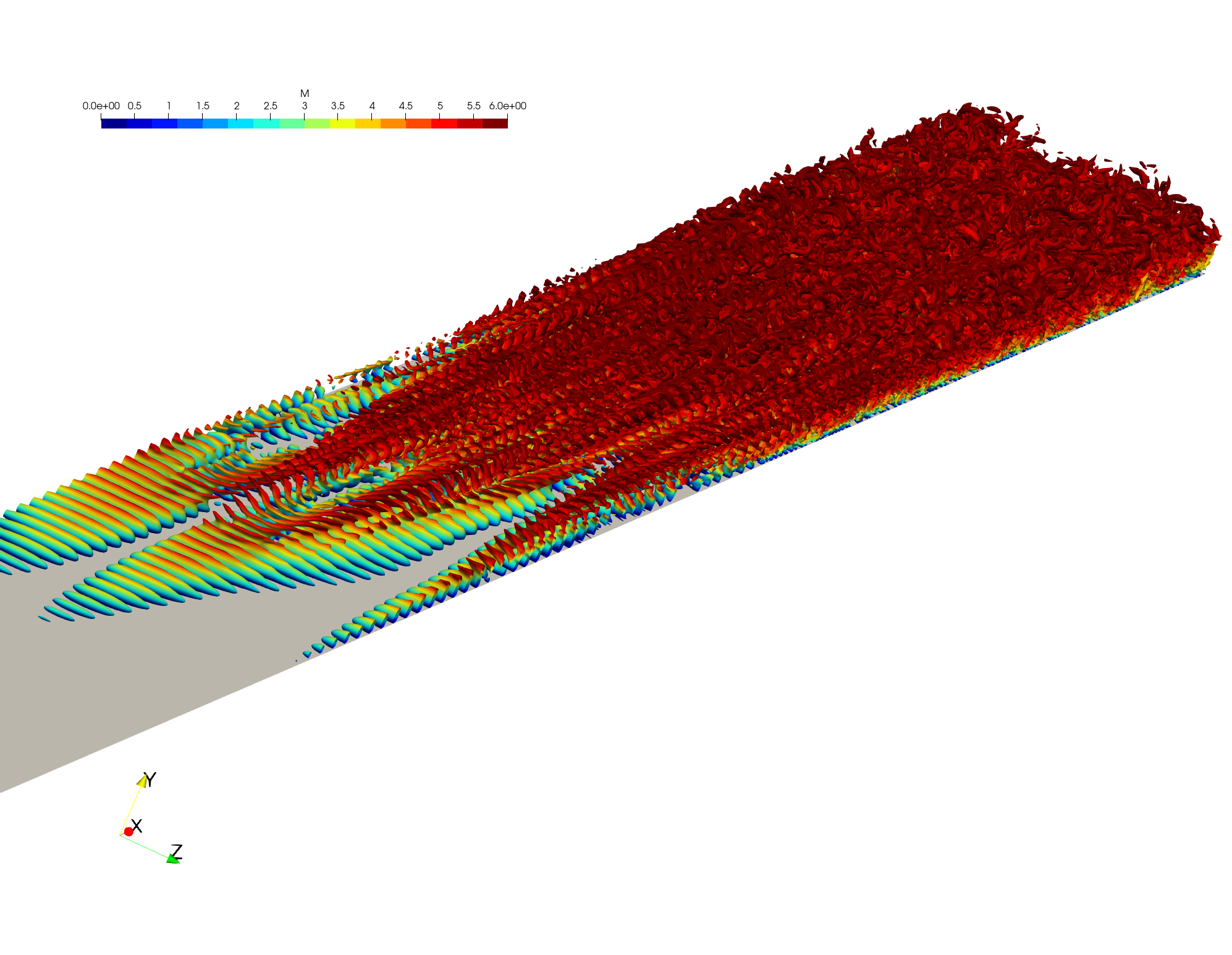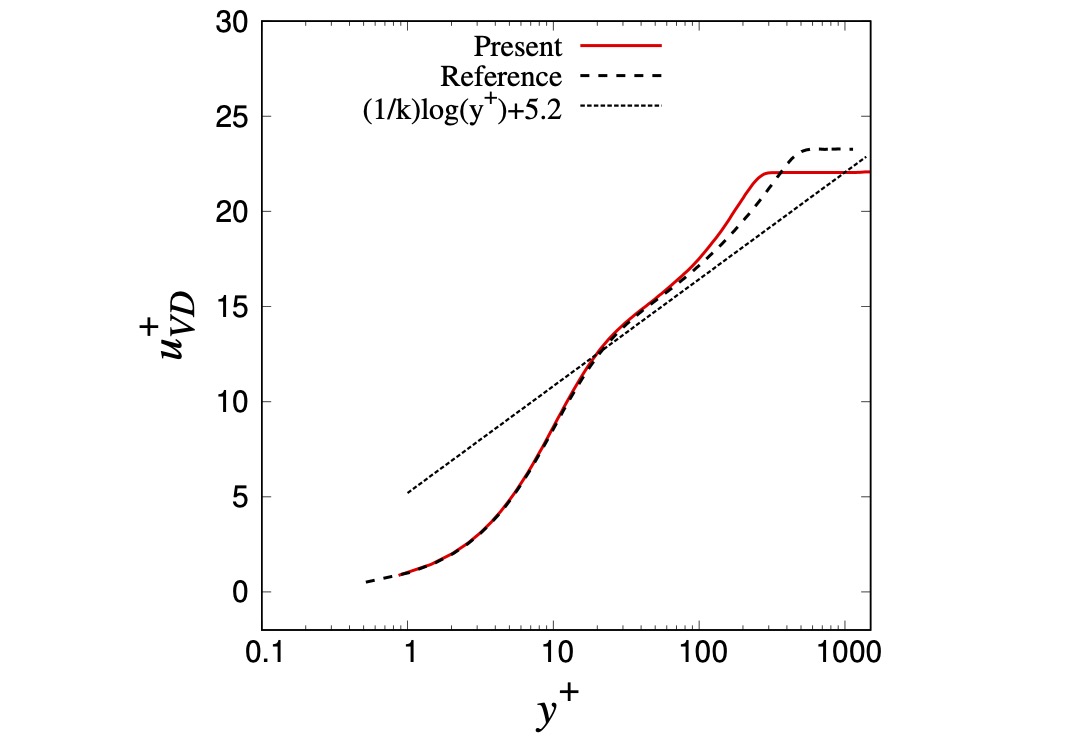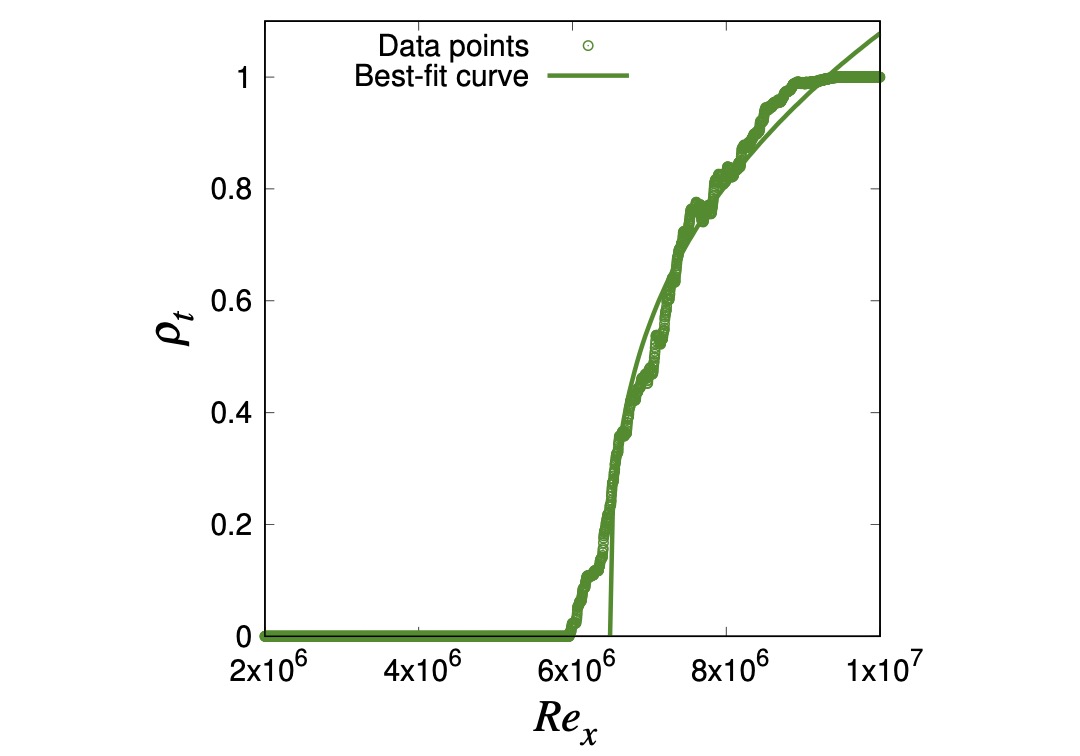Study on Physics and Modeling of Turbulent Transitions in Boundary Layer of Hypersonic Flows
JAXA Supercomputer System Annual Report February 2021-January 2022
Report Number: R21EACA53
Subject Category: JSS Inter-University Research
- Responsible Representative: Naofumi Ohnishi, Professor, Tohoku University
- Contact Information: Yasuhito Okano, Tohoku University(yasuhito.okano.p4@dc.tohoku.ac.jp)
- Members: Naofumi Ohnishi, Hiroki Sakamoto, Yasuhito Okano
Abstract
In hypersonic flight, turbulent transitions cause an increase in aerodynamic heating. Therefore, predicting transition locations is an extremely important research issue. Since experiments are not easy to reproduce hypersonic flow and require huge cost to operate, numerical simulations are preferable. In this study, high-fidelity numerical simulations of boundary-layer turbulent transitions in hypersonic flows are performed to investigate the mechanism and to develop a turbulent transition model.
Reference URL
N/A
Reasons and benefits of using JAXA Supercomputer System
Direct Numerical Simulation of a hypersonic boundary layer is performed. In order to capture hypersonic turbulent transition phenomena, high-resolution numerical simulation suppressed with a numerical perturbation and dissipation is required. However, such numerical simulation require a large computational cost. Therefore, it is necessity to use the super computer owned by JAXA.
Achievements of the Year
In order to verify the analogy between hypersonic turbulent flow transitions and the stochastic model, numerical simulations of hypersonic turbulent flow transitions were performed on a flat plate for a Mach 6 flow. To reduce computational cost, a blowing / suction disturbance is added near the leading edge of the flat plate. Figure 1 shows the flow field (iso-surfaces of Q criterion colored by Mach number), and Fig. 2 shows the Van Driest transformed velocity profile. These figures show that the turbulent transition simulations are properly performed. Figure 3 shows the best-fit curves of the functions derived from the turbulence fraction distribution and stochastic model. The turbulence rate distribution and the best-fit curve are in good agreement. This suggests that the stochastic model can be used to predict the propagation of turbulence even in hypersonic flows.
Publications
- Oral Presentations
1) Yasuhito Okano, Shintaro Sato, Naofumi Ohnish, Numerical Study toward Verification of Analogy between Hypersonic Turbulent Transition and Directed Percolation, 33rd ISTS, Online, March, 2022
Usage of JSS
Computational Information
- Process Parallelization Methods: MPI
- Thread Parallelization Methods: N/A
- Number of Processes: 256 - 4800
- Elapsed Time per Case: 120 Hour(s)
JSS3 Resources Used
Fraction of Usage in Total Resources*1(%): 0.10
Details
Please refer to System Configuration of JSS3 for the system configuration and major specifications of JSS3.
| System Name | CPU Resources Used(Core x Hours) | Fraction of Usage*2(%) |
|---|---|---|
| TOKI-SORA | 2380088.90 | 0.12 |
| TOKI-ST | 9906.63 | 0.01 |
| TOKI-GP | 0.00 | 0.00 |
| TOKI-XM | 0.00 | 0.00 |
| TOKI-LM | 0.00 | 0.00 |
| TOKI-TST | 0.00 | 0.00 |
| TOKI-TGP | 0.00 | 0.00 |
| TOKI-TLM | 0.00 | 0.00 |
| File System Name | Storage Assigned(GiB) | Fraction of Usage*2(%) |
|---|---|---|
| /home | 23.33 | 0.02 |
| /data and /data2 | 30820.00 | 0.33 |
| /ssd | 233.33 | 0.06 |
| Archiver Name | Storage Used(TiB) | Fraction of Usage*2(%) |
|---|---|---|
| J-SPACE | 0.00 | 0.00 |
*1: Fraction of Usage in Total Resources: Weighted average of three resource types (Computing, File System, and Archiver).
*2: Fraction of Usage:Percentage of usage relative to each resource used in one year.
ISV Software Licenses Used
| ISV Software Licenses Used(Hours) | Fraction of Usage*2(%) | |
|---|---|---|
| ISV Software Licenses(Total) | 0.00 | 0.00 |
*2: Fraction of Usage:Percentage of usage relative to each resource used in one year.
JAXA Supercomputer System Annual Report February 2021-January 2022





